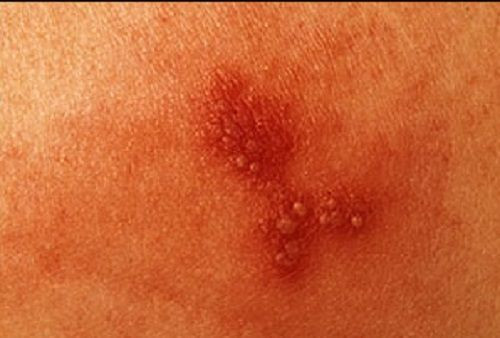US Teens More At Risk For Genital Herpes Than Ever Before, Due To Lack Of Immunity

It may surprise you to learn that you’ve most likely been exposed to oral herpes at some point in your life — most likely in your childhood. This form of herpes, known as herpes simplex virus type 1 (HSV-1), can cause genital herpes just as much as its relative HSV-2, which is typically transmitted via sexual activity. Because of early exposure, our bodies are able to develop antibodies to HSV-1, which have helped keep the virus dormant for years. But according to a new study, fewer teens are being exposed to the virus and are becoming more vulnerable to contracting HSV-1 as genital herpes.
Researchers from the Centers for Disease Control and Prevention (CDC) are warning that "in combination with increased oral sex behaviors among young people,” more teens than ever before may end up with genital herpes as the absence of antibodies makes them susceptible to infection. HSV-1 infection causes so-called “fever blisters,” which break into painful sores that can take weeks to heal. It’s transmitted though mouth-to-genital or genital-to-genital contact with a person who has HSV-1, and sores don’t necessarily have to be visible for transmission to occur.
Researchers from the CDC looked at information from several years of the National Health and Nutrition Examination Survey, a nationally representative sample of 5,000 people. They specifically looked at the HSV-1 seroprevalence — the prevalence of antibodies — in people, ages 14 to 49, from 1999 to 2004 and 2005 to 2010. Overall, seroprevalence was about 54 percent among the entire population, according to a statement.
But although the oldest age groups showed relatively stable seroprevalence between the two time periods, 20- to 29-year-olds saw a reduction of nine percent in seroprevalence, while 14- to 19-year-olds saw the most drastic reduction, at 23 percent. Whereas seroprevalence in 14- to 19-year-olds was 39 percent between 1999 and 2004, it dropped to 30.1 percent between 2005 and 2010, representing an absolute difference of nine percent in the age group.
“Almost one in 10 adolescents who 10 years ago already would have acquired HSV-1 earlier in life now are vulnerable to getting a primary infection,” Dr. David W. Kimberlin, of the University of Alabama, who was not involved in the study, wrote in an editorial. He also cautioned that the problem may only become worse, as awareness campaigns for human immunodeficiency virus (HIV) lead many teens to believe oral sex is without risk.
The study authors hope further research will provide more insight into prevention strategies against the virus. The CDC estimates that 776,000 Americans become infected by one form of the virus each year. About 16 percent of teens, ages 14 to 19, have genital HSV-2 infection.
Source: Bradley H, Markowitz L, Gibson T, et al. Seroprevalence of Herpes Simplex Virus Types 1 and 2—United States, 1999–2010. The Journal of Infectious Diseases. 2013.
Published by Medicaldaily.com



























